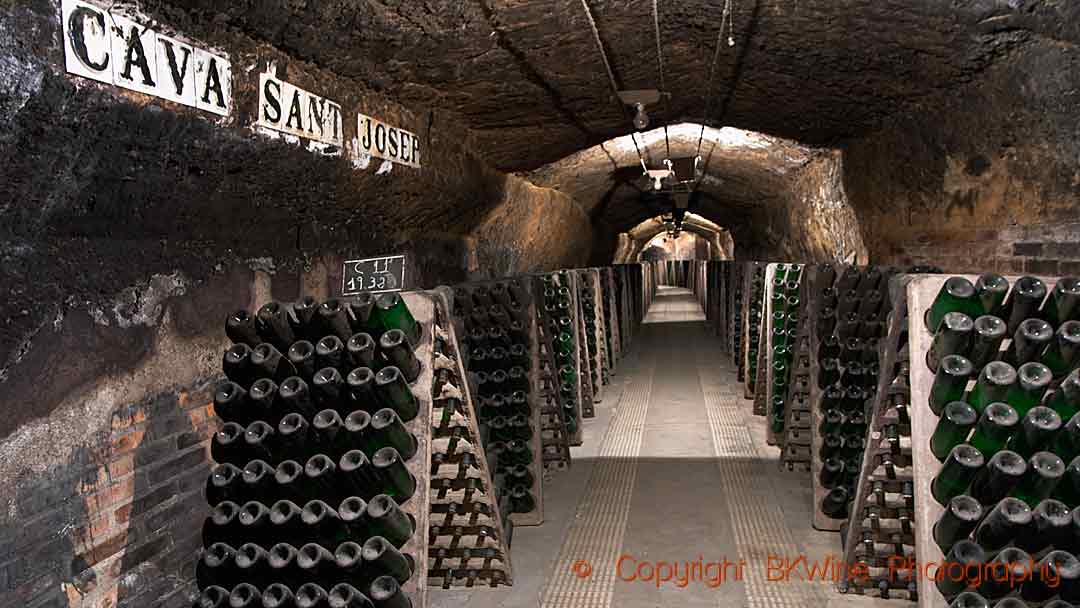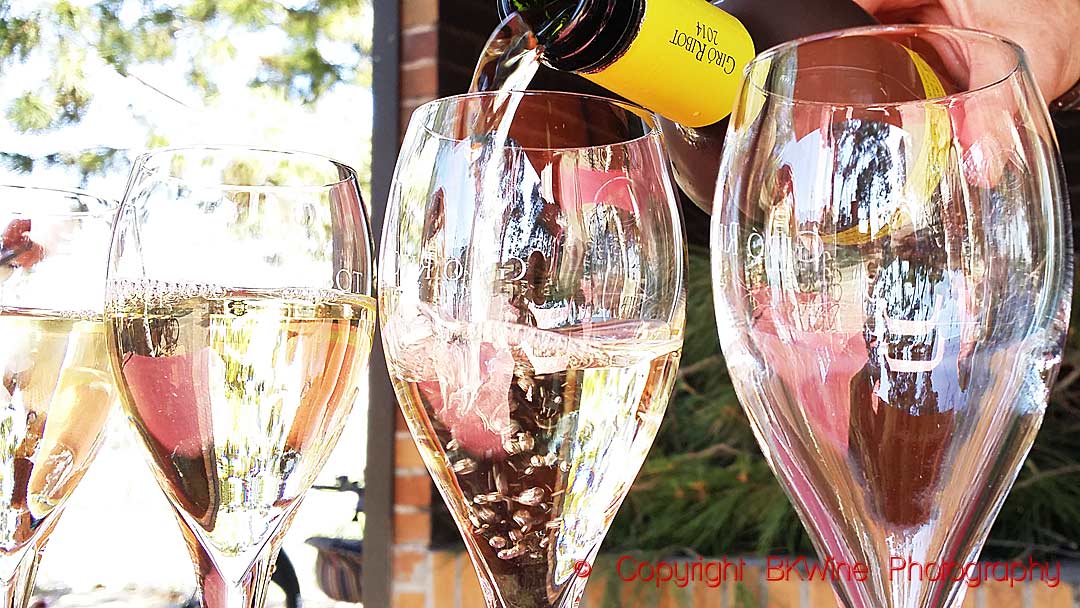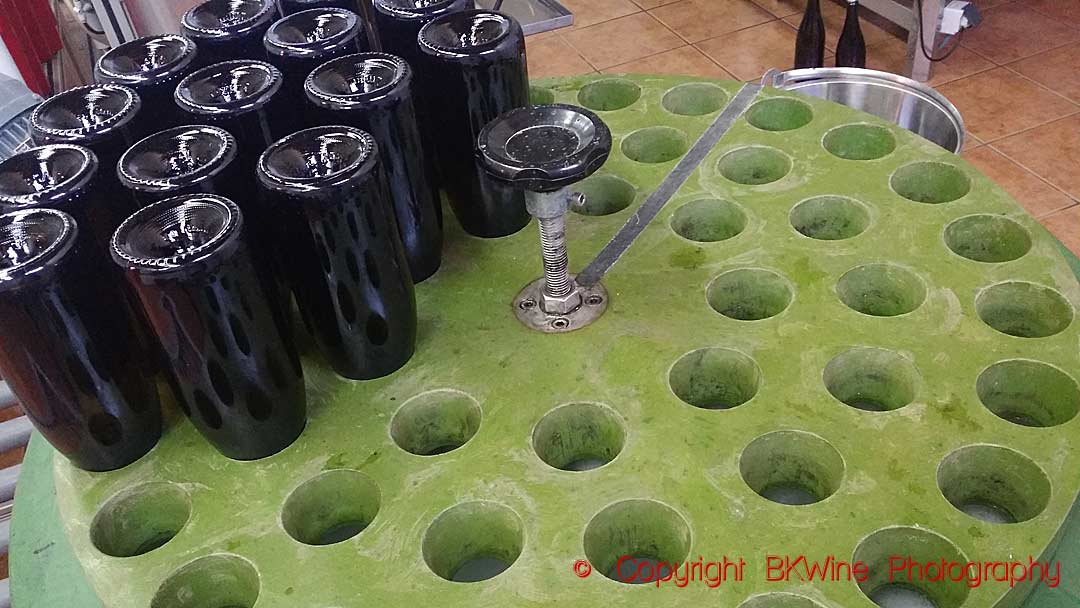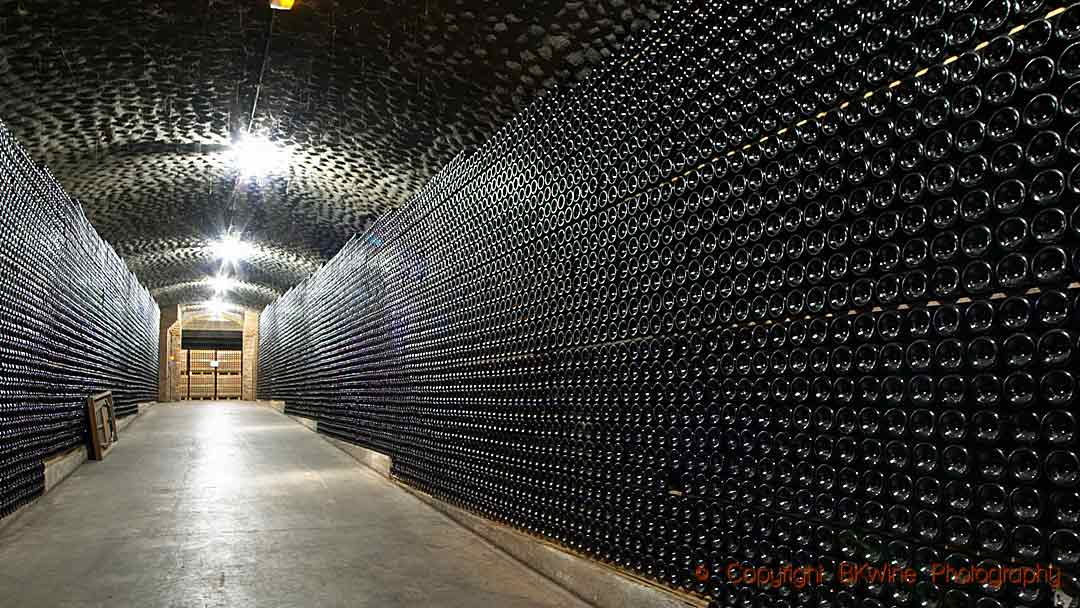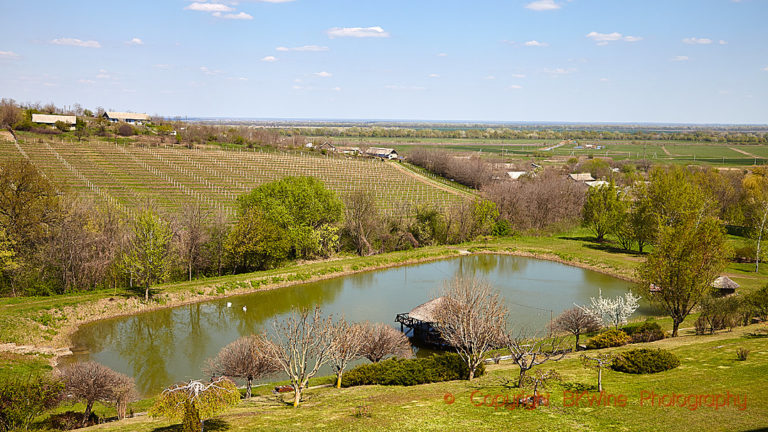Many people are familiar with cava, and many have gotten used to the fact that it is affordable bubbles, good to have when money is tight or the number of guests is large. But the cava producers are not happy with this anymore. Far too many consumers associate cava with low prices. Cava’s image needs a boost, and it is on its way.
Cava is a well-known brand. But even a strong brand needs to work to retain its customers. It is not only about keeping them but also about convincing new ones to drink cava. Champagne and Prosecco are strong competitors, and it is not obvious which strategy to use.
This is a longer version of an article published on Forbes.com.
The sales figures for 2023 are promising and show an increase compared to 2022. But volume is not everything; the prices must also be right. Consumers are happy to enjoy a glass of cava at a bargain price. However, many grape growers struggle with poor profitability, which is not sustainable in the long run.
“We need to gain in value and visibility,” says Javier Pagés, president of the Consejo de Cava (Cava’s Regulatory Council). “Don’t compare us to Champagne. Cava is different; we have the sun, the light, the Mediterranean, our culture and our own grapes.”
These are good things to highlight. But getting people to stop comparing cava to champagne will be a challenge. To a greater or lesser extent, all sparkling wines are compared to champagne, for better or worse. Champagne has its prestige, which is extremely valuable. But the prices are high. All comparisons with Champagne are not in Champagne’s favour. It is an asset to have low prices, as long as they are not too low.
The Cava industry faces both challenges and difficult questions when it looks to the future. End of November 2023, the Consejo de Cava organised a major Cava Meeting in Barcelona with invited journalists, sommeliers, and wine educators from all over the world, including BKWine. The aim was to take the pulse of the cava industry: to inform, discuss, and try to understand which way forward for cava.
But first, what’s the story behind cava?
The origin of cava is Penedès in Catalonia, in and around the town of San Sadurní d’Anoia. Penedès was traditionally a red wine region. But the phylloxera (vine louse) in the late 1800s changed all that. When the growers replanted their vineyards, they chose white local grapes instead, macabeo, xarel·lo and parellada. These lent themselves well to sparkling wines, they noted. And the story of cava began.
In 1872, Josep Raventòs Fatjó went to Champagne and learned the traditional method with a second fermentation in the bottle. The growers of Penedès adopted the technique. Production grew, and the cava houses built impressive wine cellars – some called them wine cathedrals – inspired by the modernist architecture in vogue at the time. An example is the beautiful cellar at Codorniú. Similarly, in 1888, Spain had its first world exhibition, Exposición Universal de Barcelona.
The sparkling wines produced then were called champan, the Spanish word for champagne, or xampan, the Catalan word. No one minded at the time, but that would eventually change. In 1928, the Mestres family (a house specialising in long-aged cava) began to call their wines cava instead of xampa. But it was not until 1959 that the word cava was officially used for the first time.
1972, the Consejo Regulador de los Vinos Espumosos was created, which approved the designation “cava” for Spanish sparkling wines. In 1986, the same year Spain joined the EU, the Cava region was demarcated, and the traditional method became mandatory. DO Cava was born.
The grapes
The three local grapes today account for almost 82% of the plantings:
- Macabeo, 14,000 ha
- Xarel-lo 10,000 ha
- Parellada 7,300 ha
Other approved grapes are chardonnay (2700 ha), garnacha tinta (1800 ha), trepat (1200 ha), pinot noir (820 ha), subirat parent (255 ha) and monastrell (82 ha).
Trepat is a local red grape found in small areas in northeastern Spain. Subirat parent is an old white variety from the malvasia family, producing slightly aromatic and perfumed wines. Monastrell is the Spanish name for mourvèdre.
Rosé cava, which can be delicious, by the way, is often made with only red grapes. Cave Rosé accounts for around 10% of production. It increased a lot between 2020 and 2021 but decreased slightly in 2022.
How big is the production?
Cava grapes are grown on 38,274 hectares, producing around 250 million bottles of cava annually. The industry is dominated by large houses that often own some vineyards but also need to buy grapes from one or more of the almost 6,000 grape growers. So, it is roughly the same arrangement as in Champagne.
For comparison, Champagne has 34,000 hectares and makes just over 300 million bottles, Prosecco has 28,000 hectares and produces around 600 million. If you think low harvest yields are essential for the character of a wine, you should not drink prosecco.
The criticism
Criticism within and outside the cava industry has been rampant in recent years. It is about cava not having high enough quality requirements, not enough focus on terroir, big houses that prevent the small ones from succeeding, and too low grape prices. Some (few but famous) producers left DO CAVA in protest in 2018 and started their own brand, Corpinnat.
DO Cava had to do some soul-searching, and several new rules saw the light of day around the same time. Stricter requirements were introduced for premium cava, which was also divided into different quality categories to motivate the producers to raise the quality bar and, thus, the wine’s reputation.
Geographical identity
To end the discussion that cava has no geographical identity, DO Cava was divided into four geographical zones and several sub-zones. From 2022, these geographical indications will be displayed on the labels. 97% of all cava is made in the zone called Comtats de Barcelona which includes all of Catalonia and is in turn divided into five sub-zones, Valls d’Anoia-Foix, Serra de Mar, Conca del Gaia, Serra de Prades och Pla de Ponent.
Many cava consumers will not care about the precise origin of the wine they drink. But the trend in the wine world today is to focus on terroir and increasingly smaller geographical units, so it is just right in time.
The origin of cava is Penedès in Catalonia. But for historical reasons, cava can also be produced in mainly three other Spanish regions. But as I said, these other regions account for a very small part of the production. For most consumers, cava is from Catalonia.
Cava rules
The new regulations emphasise long ageing on the lees to provide complexity and better overall ageing capacity. And of course, by extension, they should increase the image of cava.
There are now two kinds of cava, cava de guarda and cava de guarda superior. This latter is, in turn, divided into three categories: reserva, gran reserva and paraje calificado.
Cava de Guarda is not affected by the new, stricter rules. Here, a 9-month minimum of ageing still applies. Cava de Guarda largely dominates with 86% of sales. There are considerable variations within the category, producers with different ambitions, philosophies, financial means, etc. Here, we do indeed find very inexpensive cava, but not only. Spend just a bit more on a bottle, and you will discover a lot of excellent and high-quality cava.
Guarda Superior has more extended ageing on the lees but also other requirements. The vines must be at least ten years old; the harvest yield must not exceed 10,000 kg per hectare, and all wines must be vintage. Requirements for organic certification will come in 2025.
Reserva has been aged at least 18 months in bottle before release, and gran reserva at least 30 months.
Paraje Calificado is a special category within guarda superior, where the wine comes from selected vineyards. The wine is aged at least 36 months, manual harvesting is required, and the yield must not exceed 8000 kg/ha.
“Guarda Superior is small volumes but a positive addition to Cava DO”, says Javier Pagès.
These more ambitious wines now account for 4.5% of cava sales. Even if it is a small part, it is vital to have these wines as they will fetch higher prices. A wine region needs wines with high prices to gain respect.
Sales of organic cava are increasing enormously, from 4 million bottles in 2016 to 32 million in 2022. Organic cava now accounts for 12.5% of sales volume. Notably, cava guarda superior must have an organic certification starting in 2025. It is highly unusual to have such a requirement in the rules of an appellation.
The big houses and the small producers
The Cava industry is dominated by houses such as Codorníu and Freixenet (now owned by Germany’s Henkell). Three houses account for more than 50% of production. Do the big houses prevent the small producers from succeeding? Some people think so. Naturally, it is not always easy for smaller producers to gain attention. It is normal when you are small. The problem (if it can count as one) is hardly unique to cava.
The big ones have the quantities to reach all markets around the world. They are brand builders; without them, cava would not be as well-known as it is. Smaller producers often do not want to be seen in supermarkets but rather in wine shops and restaurants. They attract a different consumer group, those looking for a story and personality. Sommeliers and wine enthusiasts today are constantly looking for novelties and interesting niche wines. This is where the small ones come in. The smaller you are, the more specialised you must be to stand out. Maybe with a cava from 100 % xarel-lo, a grape with all the makings of a new star.
On the other hand, the low prices of the big houses on the export market have caused the wine’s reputation to take a beating. And in negotiations in the Consejo de Cava, the power struggle is, perhaps, uneven. Comparisons can be drawn with Champagne (except for the low prices).
To make it easier for consumers to identify what type of producer has made the cava they are drinking, the Elaborador Integral certification was introduced recently. If you see this on the bottle, you know that the producer has done everything, from growing the grapes to bottling. Currently, 15 producers have the certification.
Too low grape prices
The low grape prices were discussed several times during the Cava Meeting. And rightfully so. The grape growers sell their grapes at too low prices, or, more likely, the houses that buy their grapes do not want to pay more because they cannot sell their cava at high enough prices—a vicious circle, in other words. The grape growers suffer poor profitability, and the low prices damage the reputation of cava. The profitability of the grape growers is a real problem. Cava exports 70% of its production, and the numbers speak for themselves. In terms of value, Spain is far, far behind Italy and France.
The poor Spanish value applies to Spanish wines in general, not just sparkling wines. In 2023, statistics show that Spain exported 21 million hectolitres of wine worth 3 billion euros. Italy exported the same amount in volume but for 7.8 billion euros. And France exported 14 million hl of wine worth 12.3 billion euros.
The Spanish must get better at selling themselves and thus improve the export value.
“DO Cava does not believe in itself; we are too humble,” says Marc Morillas from Morillas Brand Design. “We are very bad at selling ourselves, and that applies to other products as well. Italians are better at telling stories. We must invest in what makes us different.”
He is right. The Spanish have something to learn from the Italians. Thanks to clever marketing, they have had incredible success with their prosecco, not least in the United States.
“Prosecco has taken an iron grip on the American market,” says Doug Frost, MW, MS, and specialist in the American wine industry. Prosecco sales to the US increased by 6% to 134 million in 2022. Cava shipped 21.6 million bottles in the same year, down 8.85% from 2021. “Cava is seen more in grocery stores, and prosecco and champagne in restaurants. The young are not interested in wine, but they drink sparkling, but cava has not benefited from that,” Doug continues.
If you look around in different countries, you will see that low-price cava is often sold at the same prices as or cheaper than prosecco, even though cava is made by the more expensive traditional method with a second fermentation in the bottle and at least 9 months of ageing. Prosecco is essentially a volume product, quickly produced with very high yields and a second fermentation in a pressure tank. But do consumers know or even care? Probably not. Prosecco has an image and packaging that attracts the young. It is all about marketing.
If large volumes of cheap cava are no longer sustainable, would the solution be to drastically reduce harvest yields and thus reduce production with higher prices as a result? This idea came up during the Cava Meeting. It is an interesting thought, but it is based on accepting the loss of many customers who will not pay the higher prices.
“We have to decide what to sell,” says Jaume Vial, sales manager at Mestres. “Now we try to make everyone happy.”
For Jaume Vial and many others in the cava industry, the path to success is through gastronomy.
Here again, the Italians have a big advantage as there are Italian restaurants everywhere worldwide. The tapas trend that swept the world a few years ago is still alive and kicking, but it does not seem to have benefited Spanish wines. The tapas they serve do not feel very Spanish either. Each country seems to interpret the concept of tapas in its own way.
But cava doesn’t need Spanish food. “One of the main goals,” says Javier Pagès, “and the current challenge, is to show that cava is the gastronomic drink par excellence, infinitely versatile to match every cuisine.”
With more and more sommeliers and top restaurateurs offering cava reserva and gran reserva in their restaurants, influential wine enthusiasts will discover these more ambitious cavas. They will spread the word and improve the image of cava in the process. At least that’s the idea. And maybe spread some Spanish culture as well. Rafael Antoin, food influencer and Cava ambassador, regrets that “we are missing to show people our cava culture; it is not present among the young.” Well, it is time to remind them.
Keep an eye out for more Cava articles here, including producer recommendations.
–
Read more on cava and sparkling wine on BKWine Magazine, for example, here:


